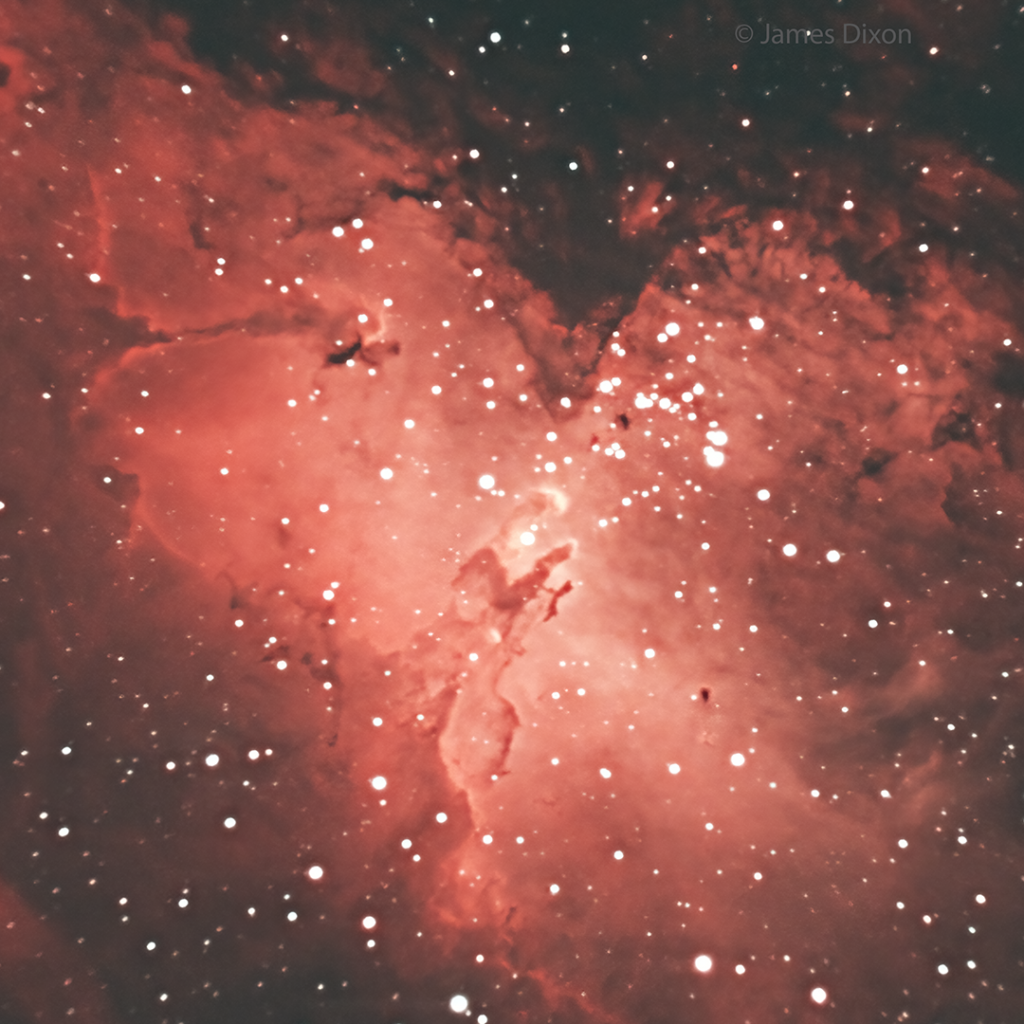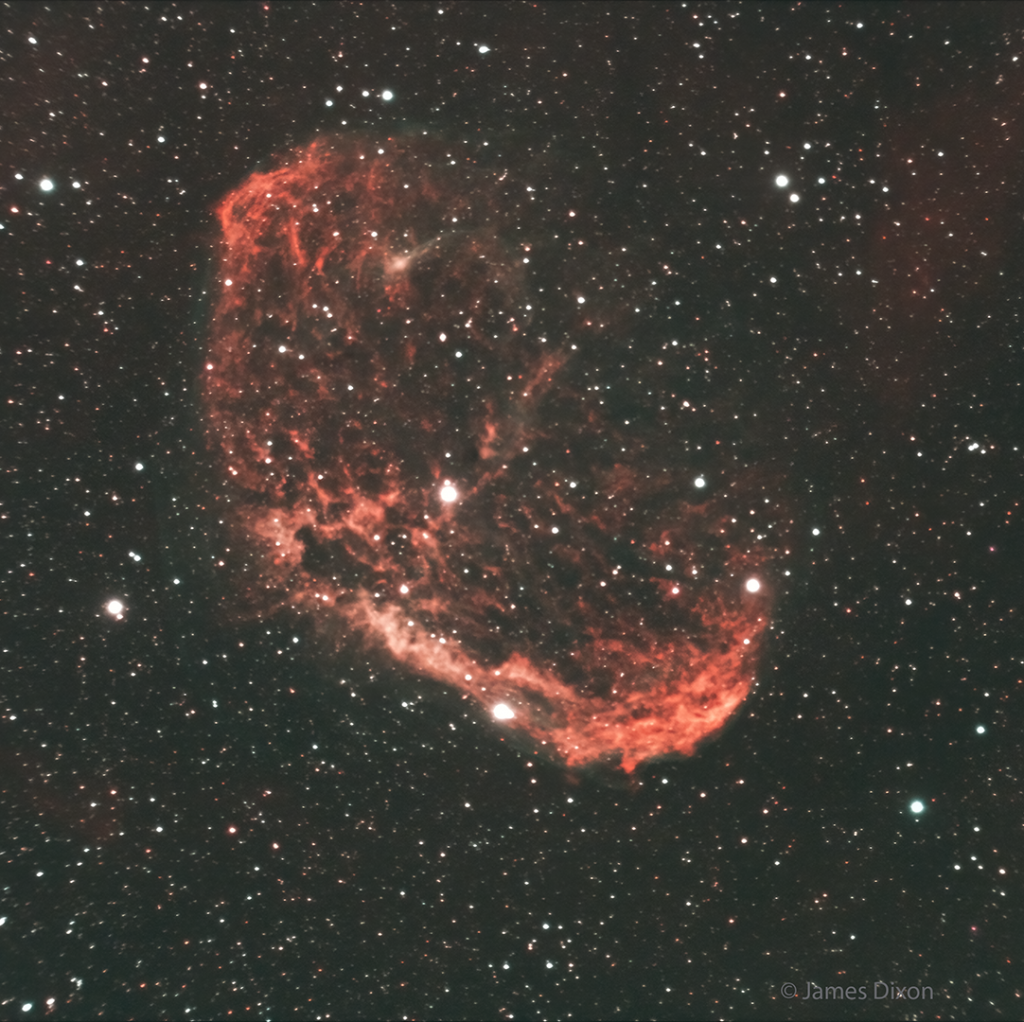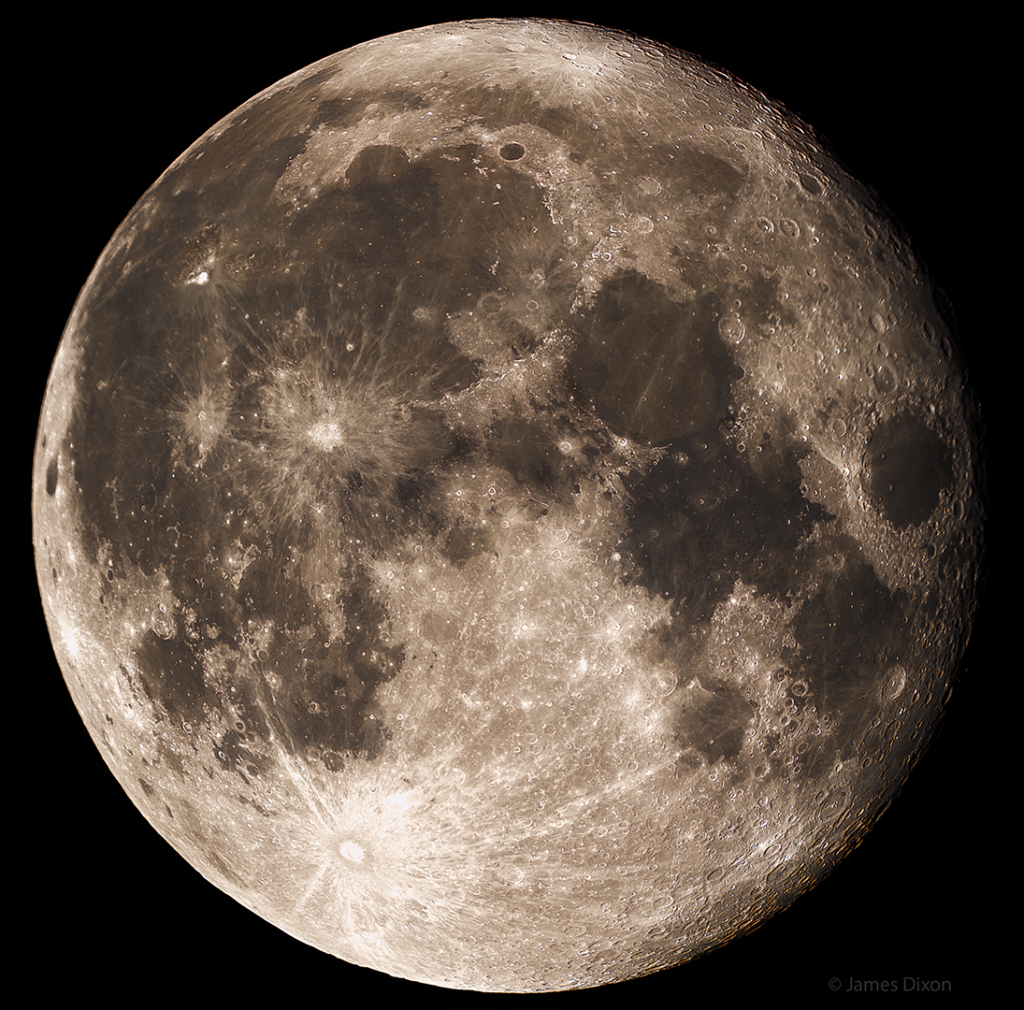

I got a late start because I wasn’t sure it would clear up but arrived in time to set up before dark. In the darkening twilight, what I believe was a Chuck-will’s-widow flew around the observing field for a few seconds. A minute later, an Eastern Screech-Owl started calling to the west. A minute after that, another responded from the east. They conversed for a minute or two.
Though nominally clear, it was hazy from the western forest fires. I could not see Venus to the west. Venus! However, stars overhead started to appear and that was enough. I set up two rigs, my C11 at f/6.3 with a dual narrowband filter and my 294MC Pro and a full spectrum DSLR with a light pollution filter. The latter was dedicated to shooting the Rho Ophiuchi area with a zoom lens set at 75mm. The former started with M16, the Eagle Nebula and later shifted to NGC 6888, the Crescent Nebula. I shot two hours of five minute subs of the Eagle at the camera’s unity gain of 120 and 2.5 hours of one minute subs of the Crescent at a gain of 300. The results were not as good as I hoped, but I am sharing them anyway. I think I might be missing a spacer for the focal reducer as the stars at the edge were elongated and pointed back to the center. I need to look into that. Also, seeing wasn’t as good and the stars weren’t the pinpoints that they could have been.
Meanwhile, the DSLR was shooting two minute pictures until the battery ran down. I later learned that the camera had somehow gotten switched from Raw to JPEG. That was disappointing to say the least.
Around 3:30 AM, I realized the second magnitude star I was looking at was in fact first magnitude Capella. That harbinger of longer fall nights was diminished by the haze that much. To the east, the Pleiades were about 30 degrees above the horizon and Aldebaran was below them.
I left the property at 4:30 at about the start of astronomical twilight.


